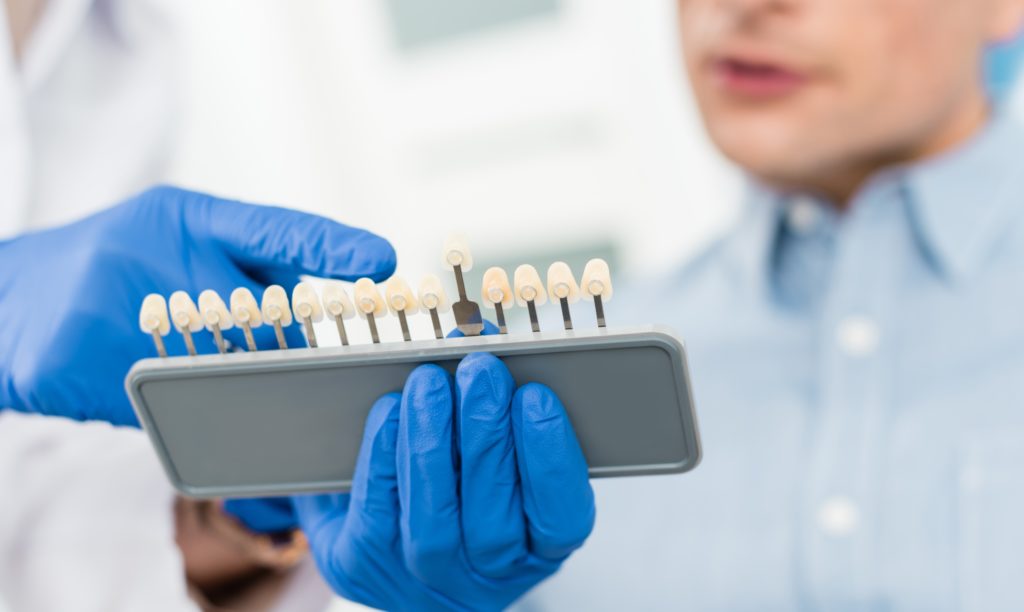Dental Implants – The Basics
When Swedish Orthopedic surgeon Per-Ingvar Brånemark invented the dental implant in the early 1950s, he probably didn’t imagine it would become the gold standard it is today. The fixture underwent multiple structural and technological advancements since its advent to become the implant dentists use today.
Dental implants are the replacement of choice for missing teeth. This prosthetic unit is fairly popular in cosmetic dentistry – since it not only improves the structure and function of the oral cavity but is also extensively aesthetic.
Dental Implant – The Different Parts
A dental implant is made of three distinct parts.
The Base or Post
The part of the implant that is surgically placed into the jaw bone is known as the post. This is made of either zirconia or titanium. The latter is used more commonly and is highly biocompatible.
The placement of the post is done under anesthesia to keep the patient comfortable and pain-free. The gums at the site are sliced open and the bone is exposed. Dentists then drill a hole in the bone and proceed to place the implant post. Once this is done, the gums are repositioned and stitched.
The patient is then sent home for a couple of weeks till the post fuses with the bone completely. They are given painkillers to help with post-operative soreness and inflammation.
The Connector or Abutment
The abutment is the part of the implant that is placed on top of the post. It is responsible for connecting the implant post to the prosthesis replacing the missing tooth. It is usually placed above the gum line.
The Prosthesis
The prosthesis is the dental unit used to fill the space left behind by the lost tooth. This could be a dental crown, a dental bridge, or even a denture.
These units are highly aesthetic replacements and preserve the structure and function of the oral cavity. They also aid in the aesthetic value of the patient’s smile.
The dental unit is manufactured in a dental lab once the fusion between post and bone is complete.
What Are The Major Types Of Dental Implants Available?

Three major types of dental implants are available. These are –
- Endosteal implants
- Subperiosteal implants
- Zygomatic implants
Endosteal implants are commonly used and hence, the most popular. This is followed by Subperiosteal implants and then the zygomatic implants. Of the three, endosteal implants are the safest, and zygomatic implants are the most complex and rarely used.
Endosteal Implants
Although the most common option, endosteal implants require a healthy quantity and quality of jaw bone to fuse to. These implants are shaped like screws and are placed inside the jaw bone. The fusion between bone and implant post is known as osseointegration. This helps create a stronghold and an immensely stable base for the false teeth to be placed on to.
Osseointegration is the main reason why implants are popular and have a 98% success rate.
For patients who aren’t too keen on surgical placements of the implant base, the next option is better suited.
Subperiosteal Implants
Subperiosteal implants are the main alternative to endosteal implants. Unlike endosteal implants, Subperiosteal implants rest on top of the jaw bone and underneath the gum.
A metal frame is positioned under the patient’s gum and has a post attached to it. The gum heals around the frame and helps to hold it in place. The false teeth are then secure onto the poles that come through the gum.
This option is only considered if the patient in question doesn’t have ample jaw bone for an endosteal implant. Furthermore, a dentist might recommend this option if the patient doesn’t want to undergo extensive oral surgery involving a bone transplant.
Zygomatic Implants
Zygomatic implants are the least common type of implants that are available – and with good reason. It is an extremely complicated procedure and is undertaken if the patient doesn’t have enough jaw bone to support an endosteal implant.
In this procedure, the implant post is placed in the patient’s zygomatic process (cheekbone) instead of the jaw bone.
Is Dental Implant A Permanent Solution For Tooth Loss?
Before there were implants, there were dental bridges. While a dental bridge might appear more cost-effective, it usually rakes in the bills as time passes due to constant replacement. Furthermore, placement of a dental bridge involves interfering with healthy teeth – shaving them down to make room for the dental crown supporting the bridge. This causes an increased risk of decay and damage to previously healthy teeth.
With implants, no healthy tooth is affected since they are placed independently and individually in the jaw bone. Additionally, owing to the fusion – or osseointegration – an implant provides increased stability to the jaw bone and oral cavity. It will also take an extremely serious injury to compromise the implant’s functionality.
The fusion between implant and bone renders it persistent and irreversible, thereby making them the permanent solution for tooth loss.
Even though it is an invasive procedure that takes a considerable amount of time to complete, it has numerous advantages. These are –
- The patient has an increased sense of self-confidence once the implant has been placed. The false teeth look and feel just like their natural teeth.
- Implants don’t move around and slip in the mouth and therefore, don’t embarrass the patient.
- The stability of the implant allows the patient to enjoy all their favorite foods and don’t cause any speech issues.
- Implants don’t require any over-the-top care to maintain them.
How Often Will I Need To Have My Dental Implants Checked?
Implants require basic care – regular brushing and flossing, followed by avoiding habits like smoking, chewing tobacco, etc. This helps prevent implant failure and ensures that they last a lifetime.
Your dentist will ask you to come in at regular intervals – every 6 months or earlier – to keep an eye out on the implant’s progress. Of course, should you experience issues with your implant, feel free to visit your dentist at the earliest.
Le Sueur Family Dental is your go-to dental establishment for a dental implant if you’re residing close by! Give us a ring at (507) 665-6812 to schedule a visit with our experts.

